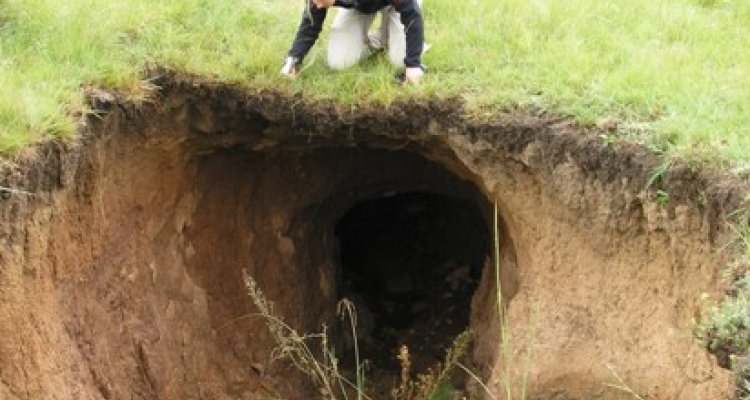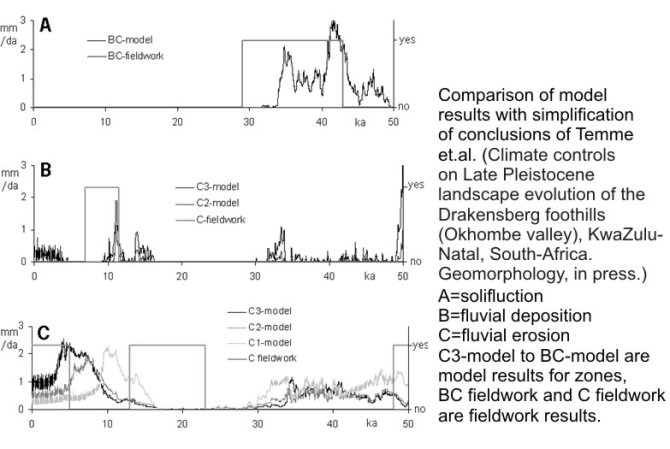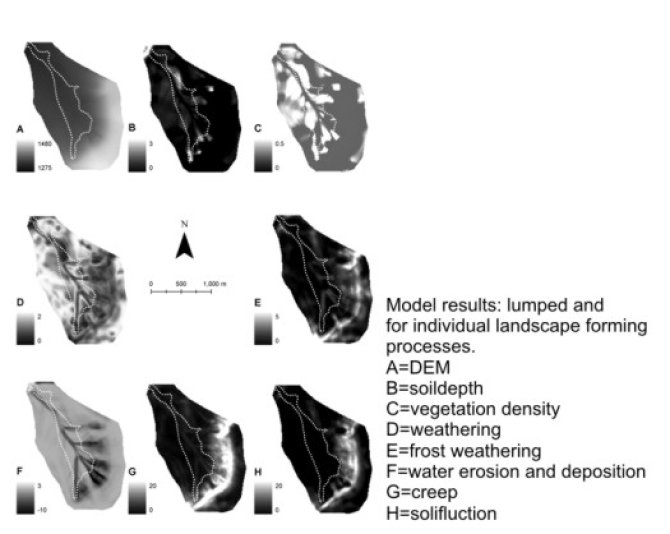
Case Study South Africa
The PhD project in South Africa focussed on vegetation-soil-landscape interactions on the 100-ka timescale.
Fieldwork in 2004 and 2005 and subsequent Optical Stimulated Luminescence dating has led to a hypothesis of landscape evolution in the area. Modelling efforts attempted to detail the implications of this hypothesis, and where possible improve it.
» see Project Page for more information
LAPSUS Application
For this purpose, four processes had to be added to LAPSUS that were not included before: creep, solifluction, physical weathering and frost weathering. Two of those processes; solifluction and frost weathering, had never before been modelled on the scale of landscapes. Moreover, vegetation interactions with these processes and with water erosion and sedimentation were included.
See also:» Poster: Fieldwork - model combinations : a next step in geomorphology?
Results
The starting point for model runs was a paleo-DEM that was created from the current DEM using fieldwork conclusions. Model results corresponded to fieldwork observations and conclusions in a variety of ways. First, model results corresponded to individual observations about process activity in specific zones. Second, the interaction between processes resulted in a realistic development of overall soildepth and a landscape evolution equal to fieldwork conclusions. Third, the modelled development of zonal soildepth corresponded to fieldwork conclusions.

Model results were used to illustrate some of the possibilities that fieldwork-modelling combinations offer. Prominent among those is the possibility to fill in the blanks of a stratigraphical record and to not only establish the dominant process at a certain time and place, but multiple process activities.

Publications
- In preparation: Multi-process ka-scale landscape evolution modelling: a case study in KwaZulu-Natal, South Africa. Temme, A.J.A.M., Veldkamp, A.
» more LAPSUS Publications.
Future research
This study increased the interest in multi-process landscape evolution modelling, by itself and in combination with fieldwork. How should we let processes interact over long timescales? How can modelling and fieldwork support each other, perhaps in iterative ways?